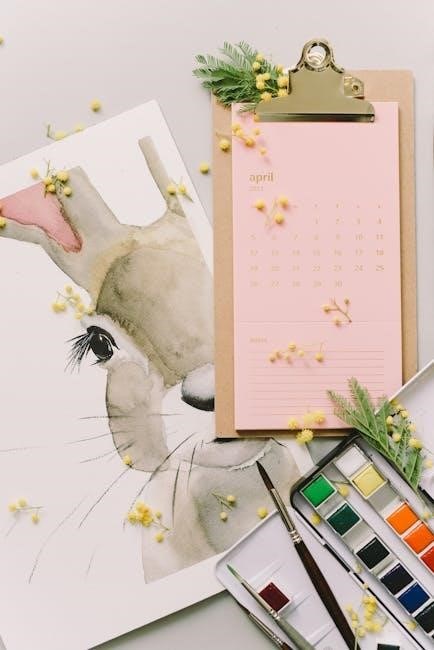Watercolor painting is a versatile medium known for its translucent qualities and emotional depth. It allows artists to create delicate, layered works that capture light and atmosphere. With resources like watercolor painting PDFs, enthusiasts can explore tutorials, techniques, and inspirations, making it accessible for both beginners and professionals to master this timeless art form.
Overview of Watercolor Painting
Watercolor painting is a captivating art form known for its transparency and fluidity. It involves using water-soluble pigments to create delicate, layered compositions that often capture the essence of light and atmosphere. This medium is highly versatile, allowing artists to produce everything from intricate botanical studies to expansive landscapes and intimate portraits. The rise of digital resources, such as watercolor painting PDFs, has made it easier for artists to learn and refine their skills. These guides often include step-by-step tutorials, material recommendations, and insights into mastering techniques like washes and color theory. Whether you’re a beginner or an experienced artist, watercolor painting offers endless opportunities for creative expression and growth. Its timeless appeal continues to inspire artists worldwide, making it a beloved medium in both traditional and modern art practices.
History and Evolution of Watercolor Painting
Watercolor painting has a rich and diverse history that spans thousands of years, tracing back to prehistoric times when pigments were used on cave walls. It evolved significantly in Asia, where it became a cornerstone of traditional art forms. In Europe, watercolor gained prominence during the Renaissance and later flourished in the 18th and 19th centuries with artists like J.M.W. Turner, who elevated it to a fine art medium. The development of modern watercolor techniques and materials has been well-documented in resources such as watercolor painting PDFs, which provide insights into its historical progression. These guides highlight how watercolor has adapted to cultural and technological changes, remaining a vibrant and expressive medium. From ancient practices to contemporary applications, watercolor painting continues to evolve, offering artists new ways to explore and innovate.

Materials for Watercolor Painting
Essential materials for watercolor painting include high-quality paints, brushes, and paper. Resources like watercolor painting PDFs provide detailed guides on selecting and using these tools effectively for optimal results.
Essential Materials Needed
Watercolor painting requires specific tools to achieve desired effects. High-quality watercolor paints, preferably light-fast and pigmented, are crucial. Natural or synthetic brushes in various sizes are essential for blending and detail work. Cold-pressed, acid-free paper with a texture suitable for water absorption is recommended. A palette for mixing colors, water containers, and a spray bottle for maintaining moisture are also necessary. Additional tools like masking fluid, tape, and a sponge can enhance creativity. Watercolor painting PDFs often include detailed lists and tips for selecting the best materials, ensuring artists are well-prepared for their projects. Investing in good-quality supplies can significantly improve the outcome of your artwork, making the painting process more enjoyable and rewarding.
Watercolor Paints and Brushes
Watercolor paints are typically sold in pans or tubes, with light-fast pigments being ideal for lasting artwork. Brushes are a key tool, available in natural hair (like sable) for precise strokes or synthetic for versatility. Round brushes excel at detail, while flat brushes are perfect for broad washes. Many watercolor painting PDFs offer insights into selecting paints and brushes, emphasizing the importance of quality materials. Proper care, such as cleaning and storing brushes, extends their lifespan. Understanding the characteristics of different paints and brushes allows artists to achieve the desired effects in their work, making these tools fundamental to mastering watercolor techniques.
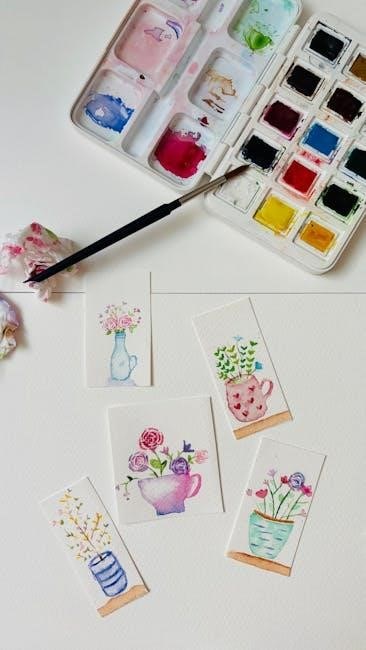
Techniques in Watercolor Painting
Explore essential watercolor techniques like wet-on-wet, glazing, and negative painting. These methods, detailed in watercolor painting PDFs, help artists achieve vibrant, layered, and dynamic works with precision and creativity.
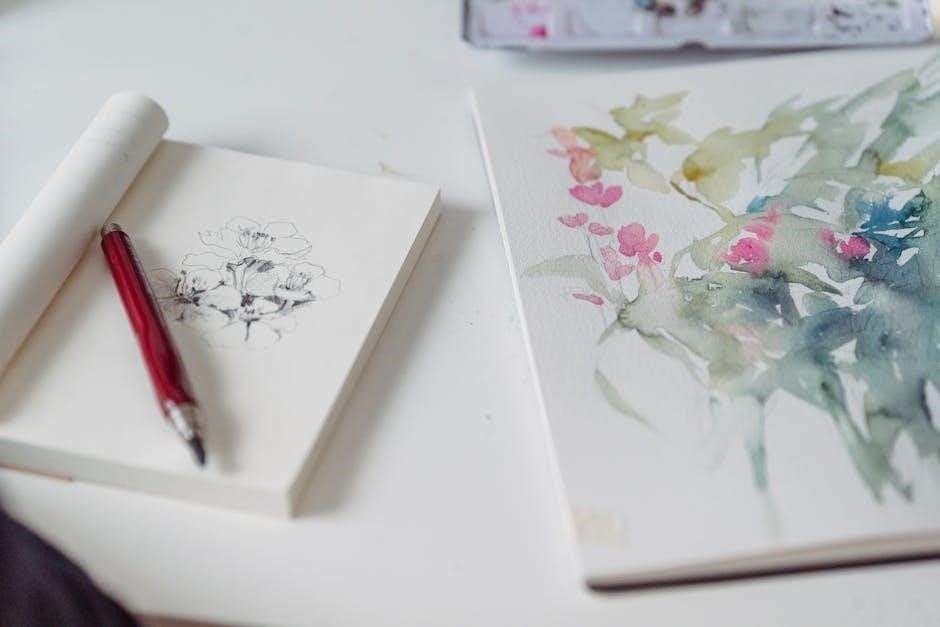
Basic Techniques for Beginners
Mastering basic watercolor techniques is crucial for beginners. Start with simple exercises like washes to create smooth, even layers. Practice mixing colors to understand how pigments interact. Learn to control water and pigment ratios to achieve desired transparency. Use drybrush for textured effects and wet-on-wet for blending. Experiment with sketching to plan compositions. These foundational skills, often detailed in watercolor painting PDFs, build confidence and lay the groundwork for more complex techniques. Consistent practice helps develop muscle memory and familiarity with the medium. By starting with these basics, new artists can gradually explore advanced methods and express their creativity effectively.
Mastering Washes and Layering
Mastering washes and layering is essential for achieving depth and luminosity in watercolor painting. A wash involves applying a thin layer of pigment evenly across the paper. Start with light washes to establish the composition, gradually building layers for richer colors. Use wet-on-wet techniques to blend pigments seamlessly, while glazing involves layering transparent washes for vibrant hues. Properly allowing each layer to dry prevents muddying the colors. Practice controlling water and pigment ratios to maintain transparency. These methods, often detailed in watercolor painting PDFs, help artists create intricate, layered artworks. Avoid over-layering, as it can dull the painting. By refining these techniques, artists can achieve striking, professional-quality results with ease and precision.
Understanding Color Theory
Understanding color theory is fundamental to creating harmonious and visually striking watercolor paintings. It involves studying the properties of colors, their relationships, and how they interact. The color wheel is a key tool, showing primary and secondary colors, warm and cool tones, and complementary hues. In watercolor, pigments behave uniquely due to their transparency and light reflection. Learning to mix colors effectively is crucial, as watercolors rely on layering and blending. Many watercolor painting PDFs provide detailed guides on color theory, offering practical exercises and examples. These resources help artists understand how to create balanced compositions, evoke emotions, and achieve desired effects. By mastering color theory, painters can enhance their work’s depth and impact, ensuring their art resonates with viewers on a deeper level.
Common Mistakes to Avoid
When learning watercolor painting, several common mistakes can hinder progress. Overmixing colors on the palette or paper can lead to muddy tones and loss of vibrancy. Using too much water or insufficient pigment often results in weak, washed-out washes. Incorrect brush selection and handling can disrupt texture and detail. Additionally, neglecting to plan compositions or failing to allow layers to dry fully can cause unintended blending or bloating. Many watercolor painting PDFs highlight these pitfalls, offering practical advice to avoid them. By understanding these errors and adjusting techniques, artists can achieve cleaner, more controlled results. Mastering these fundamentals is essential for producing professional-quality work and enjoying the creative process fully.
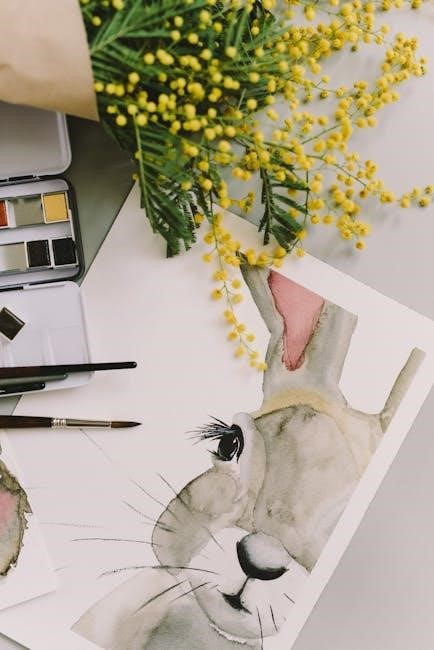
Tutorials and Guides
Discover a wealth of watercolor painting PDFs offering step-by-step tutorials, practical guides, and expert tips. From landscapes to portraits, these resources provide inspiration and instruction for all skill levels.
Step-by-Step Tutorials for Beginners
Watercolor painting PDFs provide an excellent starting point for beginners, offering clear, structured lessons to build foundational skills. These guides typically cover essential materials, basic techniques like wet-on-wet and drybrush, and color theory basics. Many tutorials include exercises to practice washing, blending, and layering, helping newcomers gain confidence. Topics often range from simple exercises, such as painting skies or flowers, to more complex subjects like portraits or landscapes. These resources are designed to be approachable, breaking down complex concepts into manageable steps. Additionally, many PDFs include visual examples and step-by-step instructions, making it easier for learners to follow along. Whether you’re exploring watercolor for the first time or refining your skills, these tutorials offer a comprehensive and accessible way to learn. They cater to all skill levels, ensuring a smooth transition from basics to more advanced techniques.
Landscape Painting Tutorials
Watercolor painting PDFs dedicated to landscapes provide detailed guidance on capturing natural scenes with precision and beauty. These tutorials often focus on techniques like layering washes, blending colors, and creating soft, atmospheric effects. Beginners learn how to sketch and plan compositions, while advanced artists can refine their skills in depicting skies, mountains, and water. Many resources include step-by-step exercises for painting specific elements, such as trees, rivers, and sunsets. Tips on using reference images and understanding perspective are also common. The tutorials emphasize the importance of balancing detail and spontaneity, allowing the water to flow naturally on the paper. By following these guides, artists can master the challenges of landscape painting and achieve vibrant, lifelike results. These PDFs are invaluable for anyone looking to explore the beauty of watercolor landscapes.
Portrait Painting Tutorials
Watercolor painting PDFs on portrait painting offer comprehensive guides for capturing human features and expressions. These tutorials emphasize layering techniques to achieve lifelike skin tones and delicate details. Artists learn how to blend colors seamlessly and use reference images effectively. Tips on rendering eyes, hair, and facial contours are often included, along with advice on maintaining natural proportions. Advanced methods for conveying emotion and depth are also covered. These resources cater to both beginners and experienced painters, providing step-by-step instructions to refine portrait painting skills. By following the exercises and tips in these PDFs, artists can master the subtleties of watercolor portraiture and create compelling, expressive works that capture the essence of their subjects.
Floral and Botanical Themes
Watercolor painting PDFs dedicated to floral and botanical themes provide detailed guidance for capturing the beauty of flowers and plants. These resources often include step-by-step tutorials, sketches, and exercises to help artists master the delicate washes and layering techniques required for botanical art. From painting intricate petals to achieving lifelike foliage, these guides offer practical advice on color selection, brushwork, and composition. Many PDFs feature finished paintings for inspiration, along with tips on how to convey texture, light, and shadow. Whether focusing on a single bloom or a lush bouquet, these resources empower artists to create vibrant, realistic floral watercolors. They are ideal for both beginners and experienced painters looking to refine their botanical painting skills.
Abstract Watercolor Tutorials
Abstract watercolor tutorials offer a creative outlet for artists to explore fluid, non-representational compositions. Many watercolor painting PDFs provide step-by-step guides on techniques like wet-on-wet, drybrush, and glazing to achieve dynamic, expressive results. These resources often include exercises for experimenting with color theory, texture, and spontaneity. Tutorials may focus on capturing mood or emotion through loose, interpretive brushstrokes rather than precise details. Artists can learn how to balance randomness with intentional design, creating vibrant, abstract pieces. Tips on layering, blending, and controlling bleeds are also common, helping painters master the unpredictability of watercolor. Whether aiming for geometric patterns or organic forms, these PDFs inspire artists to push boundaries and embrace the unique qualities of abstract watercolor art. They are perfect for those seeking to explore new creative possibilities.
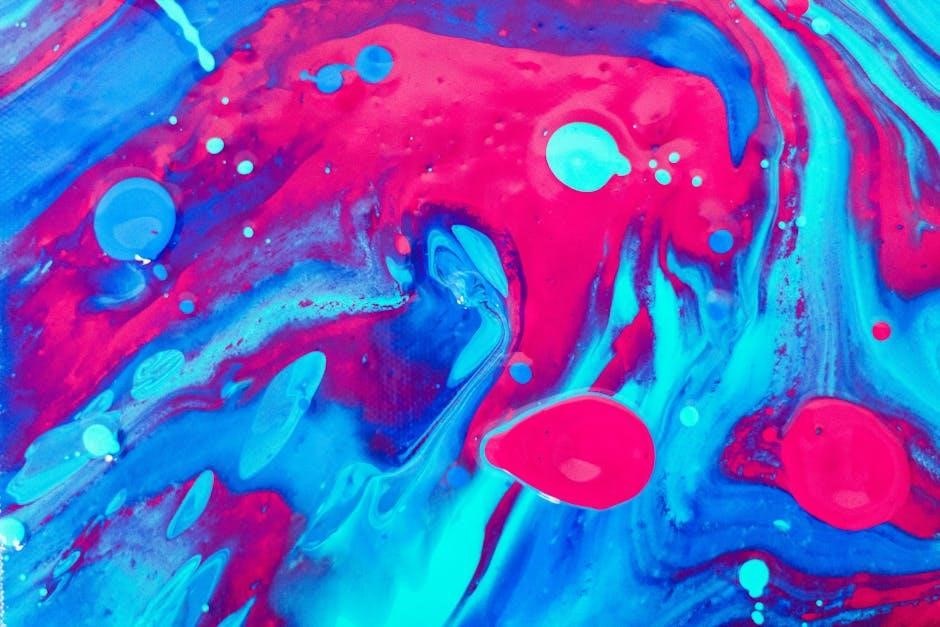
Advanced Topics
Advanced watercolor techniques focus on mastering atmosphere, mood, and complex compositions. Watercolor painting PDFs often delve into refining skills like layering, glazing, and creating dynamic contrasts to elevate artworks. These resources help artists achieve sophistication and depth in their pieces, exploring advanced methods for capturing light, shadow, and texture. By studying these materials, painters can enhance their ability to convey emotion and narrative through nuanced, intricate designs. These PDFs are invaluable for those looking to push their artistic boundaries and refine their craft.
Creating Atmosphere and Mood
Creating atmosphere and mood in watercolor painting involves using techniques that evoke emotions and immerse viewers in the scene. Watercolor painting PDFs often emphasize the importance of layering, glazing, and wet-on-wet methods to achieve soft, ethereal effects. By manipulating transparency and contrast, artists can convey depth and light, transforming ordinary subjects into captivating narratives. Mood can be enhanced through color temperature—cool tones for calmness, warm tones for energy—and dynamic brushwork that suggests movement or stillness. Advanced artists also experiment with negative painting and subtle gradations to create illusions of space and atmosphere. These methods, detailed in resources like Mastering Atmosphere and Mood in Watercolor, empower painters to craft works that resonate emotionally and visually, making their art more engaging and impactful.
Composition and Design Principles
Composition and design principles are fundamental to creating visually appealing watercolor paintings. These principles guide artists in arranging elements like shape, line, and color to achieve balance and harmony. Key concepts include the rule of thirds, leading lines, and symmetry, which help direct the viewer’s eye through the artwork. Negative space is also crucial, allowing subjects to breathe and adding depth. Watercolor painting PDFs often provide exercises and examples to master these principles. For instance, The Watercolour Artists Handbook.pdf emphasizes the importance of contrast and value in creating dynamic compositions. By understanding and applying these principles, artists can craft paintings that are not only technically sound but also emotionally engaging and aesthetically pleasing, ensuring their work resonates with viewers on multiple levels.
Troubleshooting Common Issues
Troubleshooting common issues in watercolor painting is essential for refining techniques and achieving desired results. One frequent problem is paper buckling, which can be resolved by stretching and taping the paper properly before painting. Another issue is uneven drying, often caused by excessive water or humidity, which can lead to unintended textures. Watercolor painting PDFs, such as Beginning Watercolor PDF, provide practical solutions to these challenges. They also address color saturation problems, where pigments may not blend as expected. Additionally, these guides help correct mistakes like muddy colors, which result from overmixing, by teaching artists when to stop and let layers dry. By understanding and addressing these issues, artists can improve their workflow and produce more polished, professional-looking pieces. These resources are invaluable for overcoming obstacles and enhancing overall painting skills.

Resources and References
Explore a wealth of watercolor painting PDFs, offering detailed guides, tutorials, and expert tips. From The Watercolour Artists Handbook to Watercolor Impressions, these resources provide comprehensive insights for mastering techniques and materials, perfect for both beginners and advanced artists.
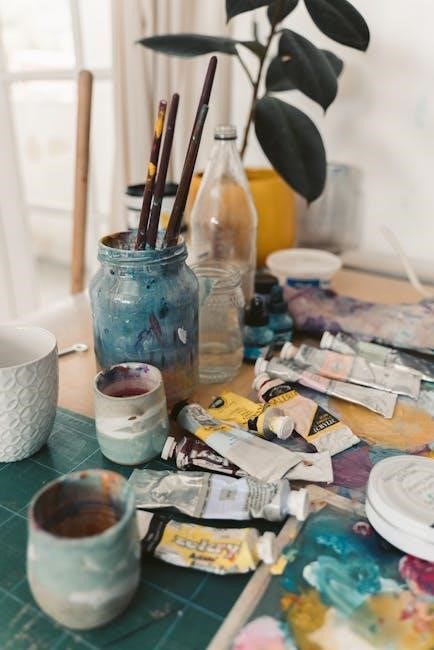
Free Watercolor Painting PDFs
Discover an array of free watercolor painting PDFs that offer comprehensive guides, tutorials, and inspiration for artists of all levels. From The Watercolour Artists Handbook to Creative Watercolor Techniques, these resources provide detailed insights into mastering essential skills. Explore step-by-step tutorials, such as Watercolor Impressions, which cover basics like washes, layering, and color theory. Additionally, find specialized guides like Charles Reid’s Portrait Painting in Watercolor and Watercolor Paintings, which focus on specific subjects. These PDFs are perfect for beginners looking to build foundational knowledge and for advanced artists seeking to refine their techniques. Many resources also include practical exercises and stunning examples to inspire your creativity. Whether you’re interested in landscapes, portraits, or abstract art, these free PDFs offer invaluable tools to enhance your watercolor journey.
Recommended Books and eBooks
Explore a curated selection of recommended books and eBooks on watercolor painting, designed to inspire and educate artists of all skill levels. Titles like The Artist’s Guide to Painting Water in Watercolor offer practical techniques for capturing water’s essence, while How to Paint Transparent Watercolour Flowers by Olga Koelsch provides step-by-step guidance for botanical themes. For landscape enthusiasts, The Big Book of Painting Nature in Watercolor is a comprehensive resource. Advanced artists will appreciate Mastering Atmosphere and Mood in Watercolor by Joseph Zbukvic, which focuses on creating emotional depth. Additionally, eBooks like Watercolor This Book and Learn to Watercolor feature interactive exercises and stunning examples. These books and eBooks are invaluable for refining techniques, exploring new styles, and gaining insights from experienced artists, ensuring a rich learning experience for watercolor enthusiasts.
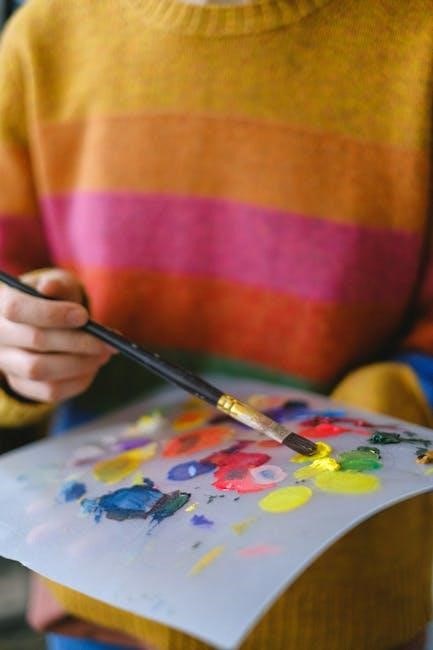
Future of Watercolor Painting PDFs
The future of watercolor painting PDFs lies in digital learning, offering accessible tutorials, interactive lessons, and real-time feedback, making mastering the art form easier and more engaging globally.
Digital Learning and Accessibility
Digital learning has revolutionized watercolor painting, making it more accessible than ever. With the rise of watercolor painting PDFs, tutorials, and online courses, artists can now learn from experts worldwide. These resources often include step-by-step guides, video lessons, and interactive exercises, providing a structured approach to mastering techniques. Many PDFs, such as The Artists Guide To Painting Water and Watercolor Impressions, offer practical tips and inspiration for both beginners and advanced artists. Additionally, digital platforms allow for real-time feedback, enabling learners to refine their skills more effectively. This accessibility has democratized art education, breaking down geographical and financial barriers. As a result, watercolor painting continues to grow in popularity, with digital tools enhancing creativity and fostering a global community of artists. The future of watercolor painting is undoubtedly bright, thanks to the convenience and richness of digital learning resources.
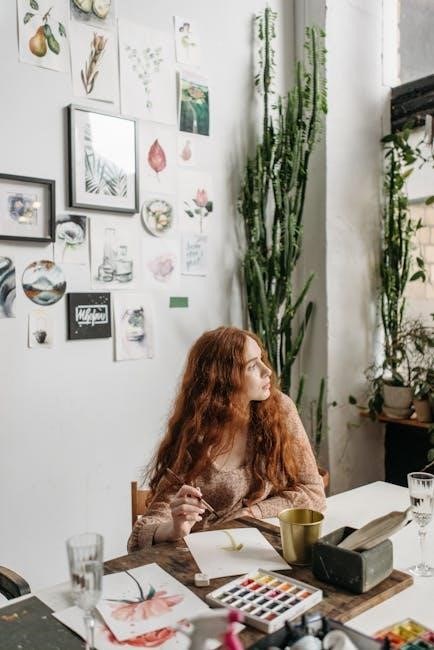
Community and Inspiration
The watercolor community thrives on shared inspiration and learning. Online forums and platforms offer resources like watercolor painting PDFs, tutorials, and workshops, fostering creativity and growth among artists of all levels.
Online Communities and Forums
Online communities and forums dedicated to watercolor painting provide invaluable resources and inspiration for artists. Platforms like WetCanvas and Artists Network University offer extensive libraries of tutorials, webinars, and critiques. Many communities share watercolor painting PDFs, featuring step-by-step guides and expert tips. These spaces foster collaboration, allowing artists to showcase their work, receive feedback, and learn from others. Additionally, forums often host challenges and competitions, encouraging creativity and growth. Resources like The Artists Guide to Painting Water in Watercolor and Beginning Watercolor PDFs are frequently shared, catering to both beginners and advanced artists. These online hubs create a supportive environment where enthusiasts can connect, share knowledge, and refine their skills, making them indispensable for anyone passionate about watercolor painting. They serve as a bridge between traditional and digital learning, ensuring accessibility for all.

